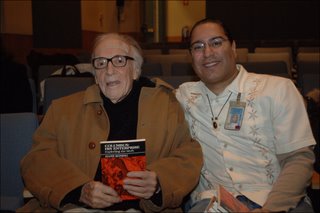By SUZAN CLARKE
THE JOURNAL NEWSMAHWAH, N.J. - Hundreds of people gathered in the woods around Stag Hill yesterday afternoon for an American Indian healing ceremony at the site where Emil Mann was mortally shot a year ago by New Jersey park police.
Many of those in attendance belonged, as Mann did, to the Ramapough Lenape Indian Nation.
Dwaine Perry, chief of the Ramapoughs, several members of Mann's family, local officials and representatives of local American Indian tribes were among those present.
The crowd, including many children and the elderly, was somber as it was urged through Native prayers, drumming and song to pray for the spirit of the 45-year-old Monroe, N.Y., man who was shot by police during a tribe cookout on April 1, 2006.
Mann was unarmed. The Ramapo town worker died of his wounds April 10.
Chad Walder, the officer who shot Mann, was indicted last week on a reckless manslaughter charge. Walder's attorney has said the officer was defending himself against Mann.
The crowd had gathered earlier in the day for a healing ceremony at the tribe's community center. People then walked 45-minutes - first on paved roadway, then on hilly, muddy unpaved paths through the woods - to get to the site where Mann was shot.
Some of the men wore fringed leather jackets, and several women had embroidered shawls over their coats.
In a clearing on the mountain, they stood in a circle and prayed for Mann's spirit, that his family, tribe and friends be comforted, and that there be peace on the mountain.
In the center of the clearing was a cloth folded lengthwise, upon which were placed containers of dried herbs or leaves, including tobacco, cedar, sage and sweet grass.
The herbs represented the four elements, which figured largely in the ceremony.
Speaking in their native language and in English, Roman Redhawk Perez, chief of the New York-based Maisiti band of the Taino Indians from the Caribbean, and Taino member of Kukarey spiritual circle Roberto Warawayute Delgado started the ceremony by blowing sharp blasts from conch shells to the north, south, east and west. The gathering followed suit by turning in each direction.
"Our people are not from this land," Redhawk said, "but we hurt... because it happened to us back home.
"Emil is an ancestor now, a young ancestor," Redhawk added.
Others who spoke remembered Emil Mann as a peacemaker. The crowd was urged to remember how Mann had touched their lives, for their memories would aid his journey.
Despite the overcast skies and the chilly air, the crowd remained standing during the ceremony, which lasted well over an hour. Afterward, people were invited to place flowers on a cross bearing Mann's name, which had been erected at the shooting spot.
Several colorful, shiny helium balloons bobbed near where they had been tied to the large wooden cross. One of the balloons bore the message, "Happy Birthday."
Mann's 46th birthday would have been tomorrow.
Joyce Coyote Woman O'Blenis, a Ramapough from Stag Hill, had known Emil Mann since he was a child.
"This should never have happened," she said of the shooting. "It was a senseless thing."
O'Blenis said the woodsy area was where the tribe taught its children Native ways and enjoyed peaceful recreation.
Mark Moore, a distant cousin and friend of the slain man's, said the ceremony was a good one.
"It gives him release, so he can go to the other side," the Wurtsboro, N.Y., man said. "It's needed."
Moore was present at the cookout the day Mann was shot. He was riding an all-terrain vehicle and didn't see the actual shooting, he said, but he came back to see Mann on the ground and Walder standing over him.
"My nephew told us to get out of here, that they're shooting us, so I went," he said. "And who do you call for help when the cops are shooting you?"
Moore said he called the media instead.
Moore cautioned the general public against the stereotyping that has seemed to plague the Ramapoughs.
"People are still calling us names," he said. The names are not as bigoted as they used to be, but they're unwarranted, Moore said. "Now they're calling us insular," he said. "We're people just like everybody else."
---------------
Related Story:Cop Indicted Ramapough Indian Killinghttp://www.nynews.com/apps/pbcs.dll/article?AID=/20070328/NEWS03/703280378
















